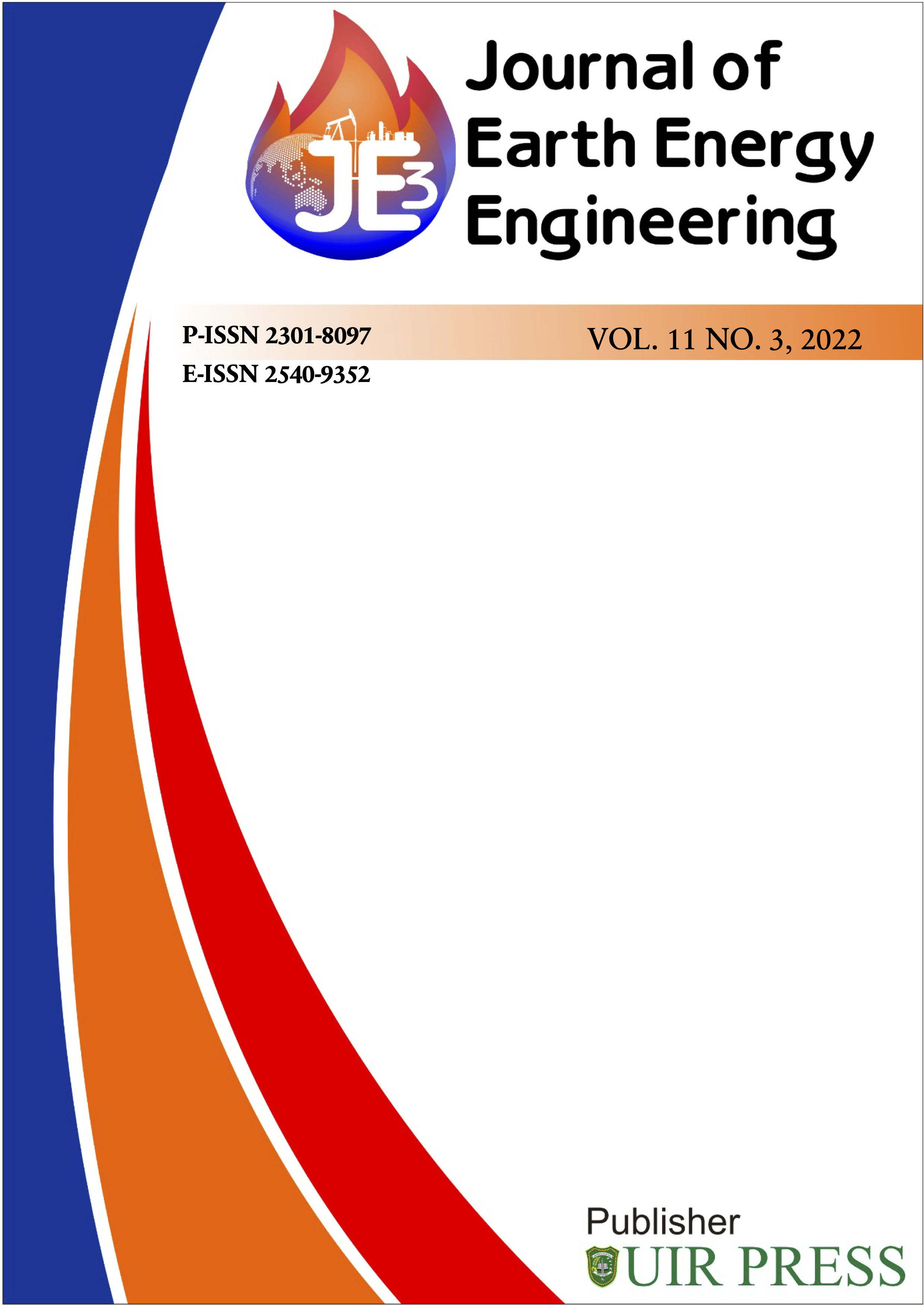Determining Factors of Energy Intensity in the Manufacturing Industry of Provinces in Indonesia
Abstract
Energy is vital to Indonesia's economic activities in various sectors. Energy plays an important role in the sustainability of the economic structure, which includes is the manufacturing industry. However, limited natural resources are one of the challenges for policymakers. Although energy conservation policies have been implemented in Indonesia since 1982, their enforcement in the manufacturing industry sector has not been solutive in supporting the development of the manufacturing industry in all regions. This study aims to determine the relationship between the development of energy intensity and economic growth in 26 provinces of Indonesia, using the growth and share analysis method from the data the authors have obtained. The results showed that the paper and printed goods, cement, and non-metallic minerals industries are the sub-sectors with high energy consumption. Then, Riau, DKI Jakarta, and West Java provinces are in the dominant quadrant for economic growth, but their energy intensity is in the low/slow quadrant. This indicates that industries in these three provinces have efficient use of energy.
Full text article
References
Batrakova, S., & Davies, R. B. (2012). Is there an environmental benefit to being an exporter? Evidence from firm-level data. Review of World Economics, 148(3), pp.449–74. https://doi.org/10.1007/S10290-012-0125-2/TABLES/13
Cole, M. A., Elliott, R. J. R., & Shimamoto, K. (2006). Globalization, firm-level characteristics and environmental management: A study of Japan. Ecological Economics, 59(3), pp.312–23. https://doi.org/10.1016/J.ECOLECON.2005.10.019
Copeland, B. R., & Taylor, M. S. (1994). North-South Trade and the Environment. The Quarterly Journal of Economics, 109(3), pp.755–87. https://doi.org/10.2307/2118421
Decker, A., & Ray, S. (2011). Measuring Energy Intensity in Selected Manufacturing Industries in India Measuring Energy Intensity in Selected Manufacturing Industries in India. Journal of Energy Technologies and Policy, 1(1). www.iiste.orgwww.iiste.org
Department of Mineral Resources and Energy, 2019. The Agency of Energy and Mineral Resources of North Sumatra Province's strategic plan (Renstra) for 2019–2023
Fisher-Vanden, K., Jefferson, G. H., Liu, H., & Tao, Q. (2004). What is driving China’s decline in energy intensity. Resource and Energy Economics, 26(1), pp.77–97. https://doi.org/10.1016/J.RESENEECO.2003.07.002
Indonesia Ministry of Industry. (2015). Rencana Induk Pembangunan Industri Nasional 2015 - 2035. Rencana Induk Pembangunan Industri Nasional 2015-2035, pp.1–98. http://www.depkop.go.id
International Energy Agency. (2019). Data and statistics. https://www.iea.org/data-and-statistics?country=WORLD&fuel= Energy supply&indicator=Total primary energy supply (TPES) by source
Ministry of Energy and Mineral Resources. 2019. Directorate General of New Renewable Energy and Energy Conservation (EBTKE).Jakarta.
National Energy Council. (2019). Indonesia Energy Out Look 2019. Indonesia Energy Out Look 2019. Sekretariat Jenderal Dewan Energi Nasional, 2019: Jakarta.
Reddy, B.S., & Ray, B.K. (2011). Understanding industrial energy use: Physical energy intensity changes in Indian manufacturing sector. Energy Policy, 39(11), pp.7234–43. https://doi.org/10.1016/J.ENPOL.2011.08.044
Setyawan, D., & Wardhana, I. W. (2020). Energy efficiency development in Indonesia: An empirical analysis of energy intensity inequality. International Journal of Energy Economics and Policy, 10(4), pp.68–77. https://doi.org/10.32479/ijeep.8808.
Statistics Indonesia. (2019). Volume Ekspor Migas dan Non-Migas Indonesia (Berat Bersih: Ribu Ton), 1990-2019. https://bps.go.id/linkTableDinamis/view/id/899 (accessed 01 Jan 2020).
Authors
This is an open access journal which means that all content is freely available without charge to the user or his/her institution. The copyright in the text of individual articles (including research articles, opinion articles, and abstracts) is the property of their respective authors, subject to a Creative Commons CC-BY-SA licence granted to all others. JEEE allows the author(s) to hold the copyright without restrictions and allows the author to retain publishing rights without restrictions.




